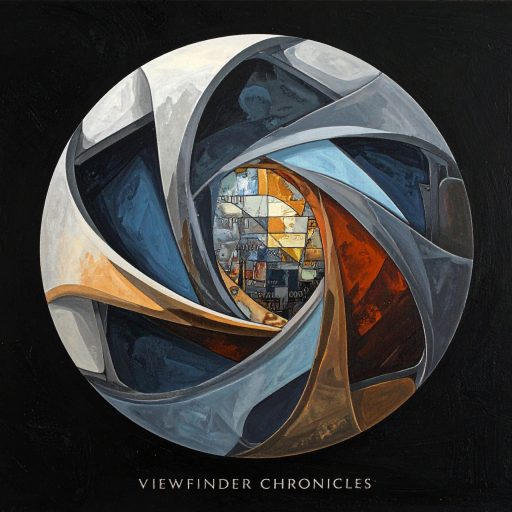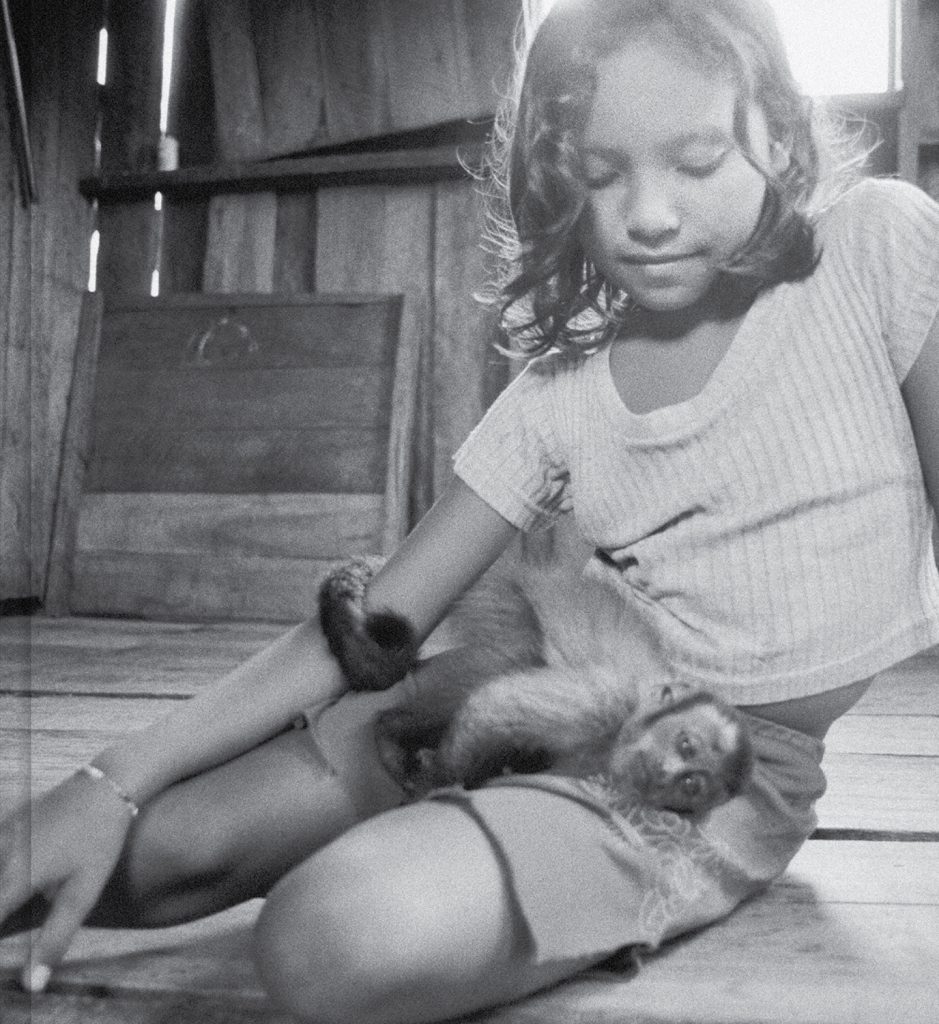
Stephanie Pommez’s the Enchanted Ones, published by Kehrer Verlag, is a book about the profound meditation on the Ribeirinho community in the Amazon, this book, feels like a constant negotiation between the mundane and the magical, blending a passionate art form with a beautiful, messy reality.
Pommez’s project delves into the heart of the Amazon, a place where the human and natural worlds are not just intertwined but completely interdependent. Her photography, captured over four expeditions, is an unflinching look at this delicate symbiosis. The physical book itself, a Kehrer Verlag production, is a work of art. The quality of the paper and the rich, saturated printing allow the tones of the Amazon to bleed off the page, creating an almost visceral experience. You can almost feel the humidity and smell the damp earth. The book feels substantial in your hands, a testament to the weight of the stories it holds. The title itself, The Enchanted Ones, hints at the mystical subtext of the work, the presence of the encantados, shapeshifting spirits that exist in Ribeirinho folklore. This is a concept that strikes a chord with my own work on my site, Echoes of the Past, where I’ve photographed tombstones in Aberdeen that seem to whisper their own forgotten tales, much like my own family’s unspoken stories.
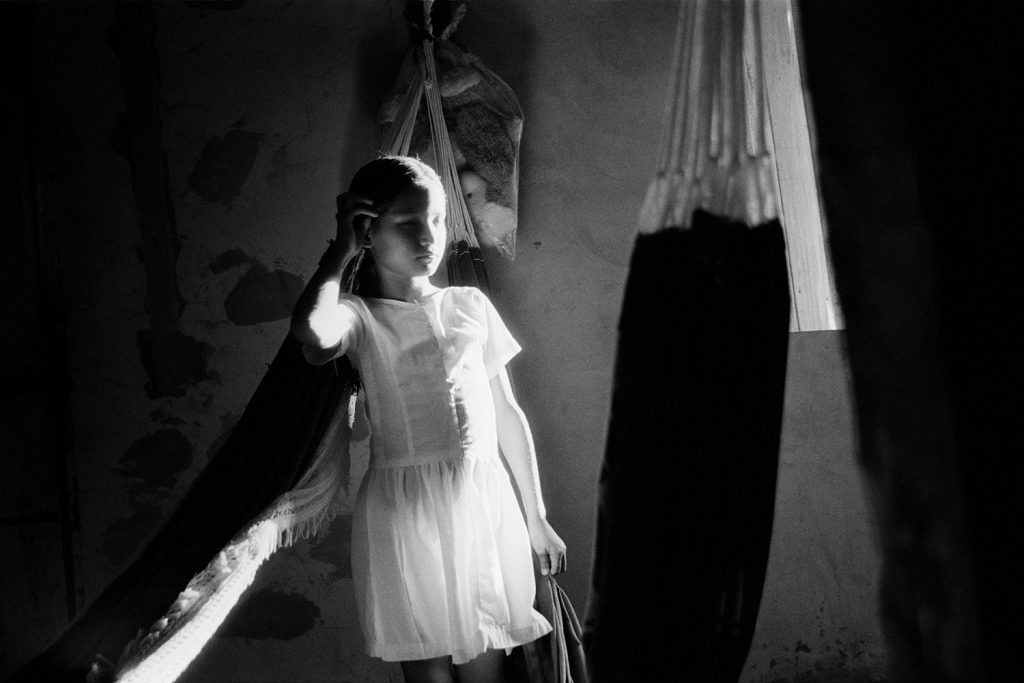
The true genius of Pommez’s work lies in her ability to make the immense seem intimate. She focuses on the women and children of the community, whose bodies and homes are intrinsically linked to the river. In one portrait, a young girl in a light dress stands in a rustic, dimly lit room, her hand raised to her ear in a contemplative pose. The black and white gives the scene a timeless, almost ghostly quality, as light streams from a window to illuminate her face while casting deep shadows on the peeling walls. It’s an image that captures a moment of quiet introspection, a silent world.
Pommez then transports us from a physical space to a psychological one with a striking image where a person’s profile is partially obscured by an overlay of dense jungle branches. The black and white tone enhances the surreal, dreamlike quality as the light filters through the foliage, creating a high contrast blend that makes the figure appear as if they are appearing from or merging with the forest itself. This resonates deeply, mirroring the “enchanted” boundary between human and spirit and reminding me of the imaginative worlds children create, where a simple walk becomes a mythical adventure.
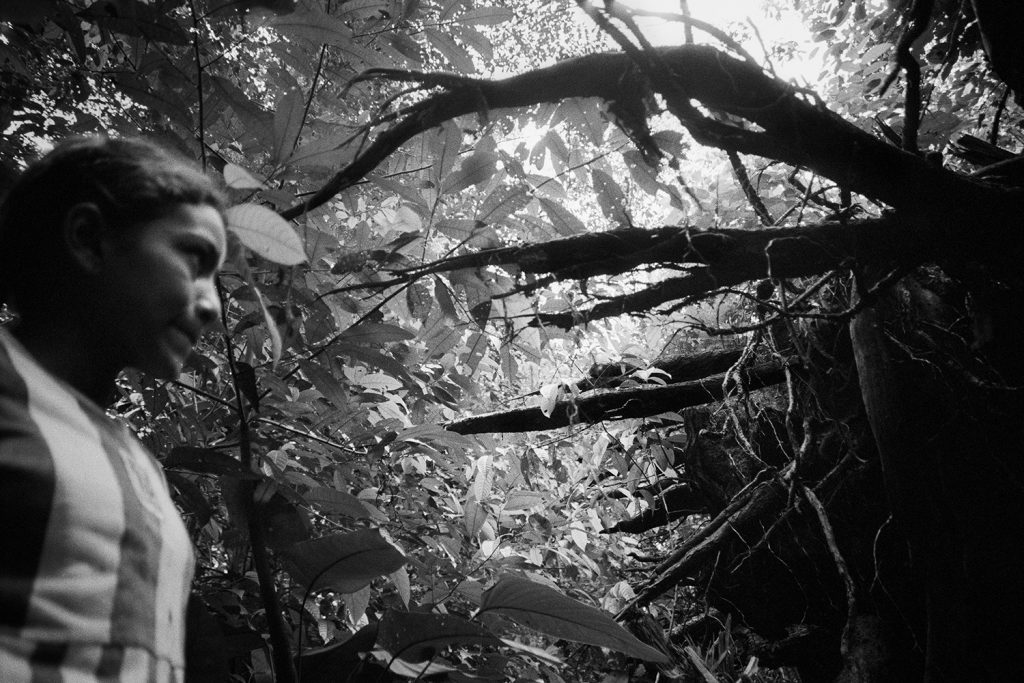
In another poignant scene, a figure walks through a doorway into a blinding light, their form blurred and ghostly against dark wooden walls. The overexposure gives it an otherworldly, transitional feel, like stepping from the known into the unknown.

Pommez broadens her focus to a scene of community and journey with a photograph of a small wooden boat floating on a calm river. The composition masterfully leads the eye from a rickety dock to the man, woman and child in the boat and then to the endless water that stretches to a distant horizon.
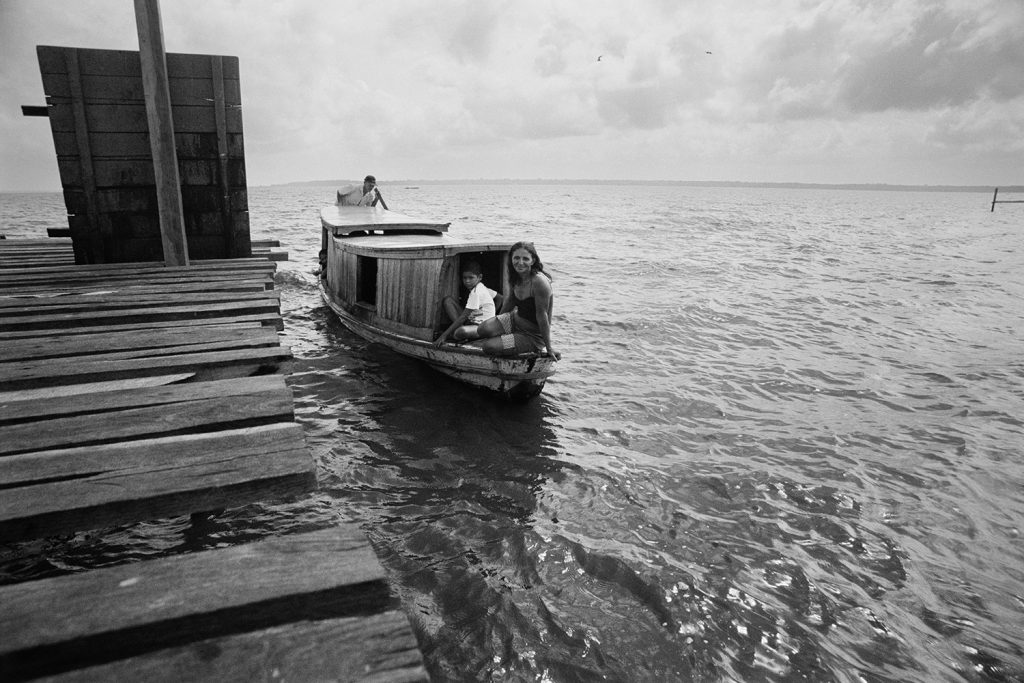
The book is filled with moments of pure magic, such as the aerial view of a winding river that is overlaid with a translucent, snake like form curving through the clouds and water. This image at once evokes the Boto legend of shapeshifting river dolphins. It reminds me of the “enchanted” tales children weave during playtime, blending reality and imagination.
Another powerful image is an intimate portrait of generational connection. Two women are in a wooden interior, the foreground woman is blurred, her face intense and close to the lens, while the background woman is sharper, with her arms in a thoughtful pose. This photograph is a beautiful, vulnerable portrait of intimacy and shared experience, echoing the wisdom of the midwives in the book. The focus play in this shot draws me in, and stirs profound reflections on vulnerability.
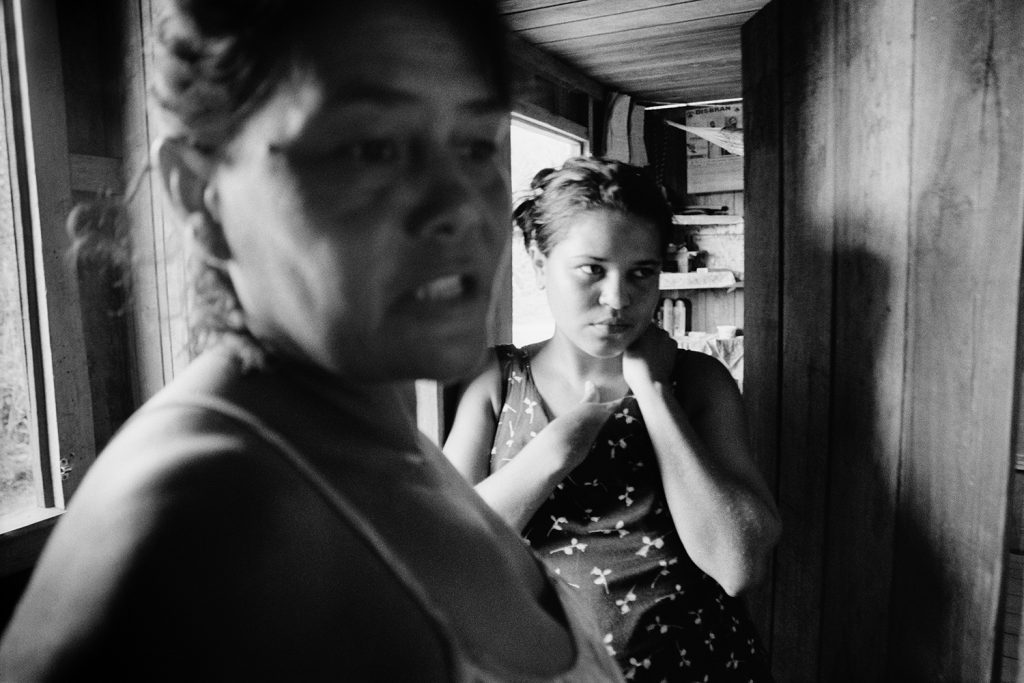
Pommez continues to captivate with her subtle enchantment in a shot of a river at dusk, where the sun low on the horizon creates rippling waves that form a snake like pattern in the water. The light reflecting off the waves creates a hypnotic, mythical effect in black and white.
Perhaps the most personally resonant image is of a man holding a toddler, gently comforting them. The rustic room, with cloth and tools, and the light softly illuminating their faces, conveys an immense sense of tenderness. The protective and nurturing hold of the man mirrors my own role as a father, guiding and supporting my children and shows this is a global inherent feeling for parents. The intimacy of this moment echoes Pommez’s deep focus on community bonds.
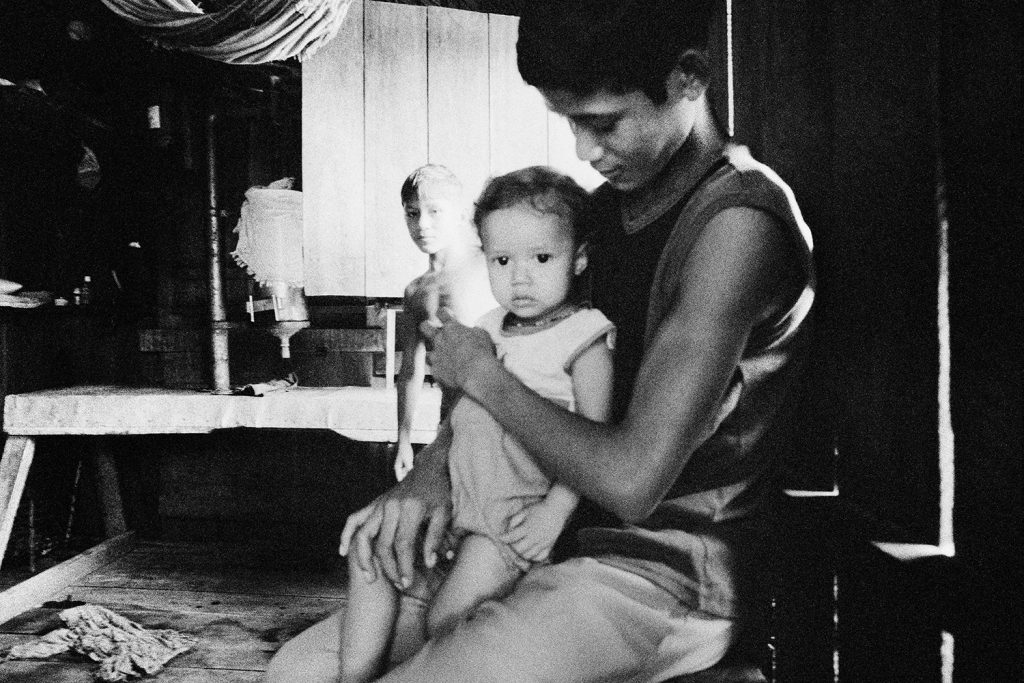
The book also presents a different kind of journey with a photograph of a canoe’s bow pointing into a narrow, forested river channel, where dense foliage arches overhead. The light filters through the leaves, creating a tunnel like effect that evokes mystery and exploration. This shot makes you wonder about the journeys we take into the unknown, whether it’s navigating the beautiful uncertainty of family life or my own photographic explorations through forgotten spaces.
We also see a scene that encapsulates resilience, stilted wooden houses on a tranquil lagoon, surrounded by jungle, with a person bathing in the water. This image hits deeply with the theme of resilience in remote communities, paralleling the moments of strength families find in their own journeys. The harmony between the structures and their environment ties into my own projects, making me want to seek similar cultural depth in my environmental work.
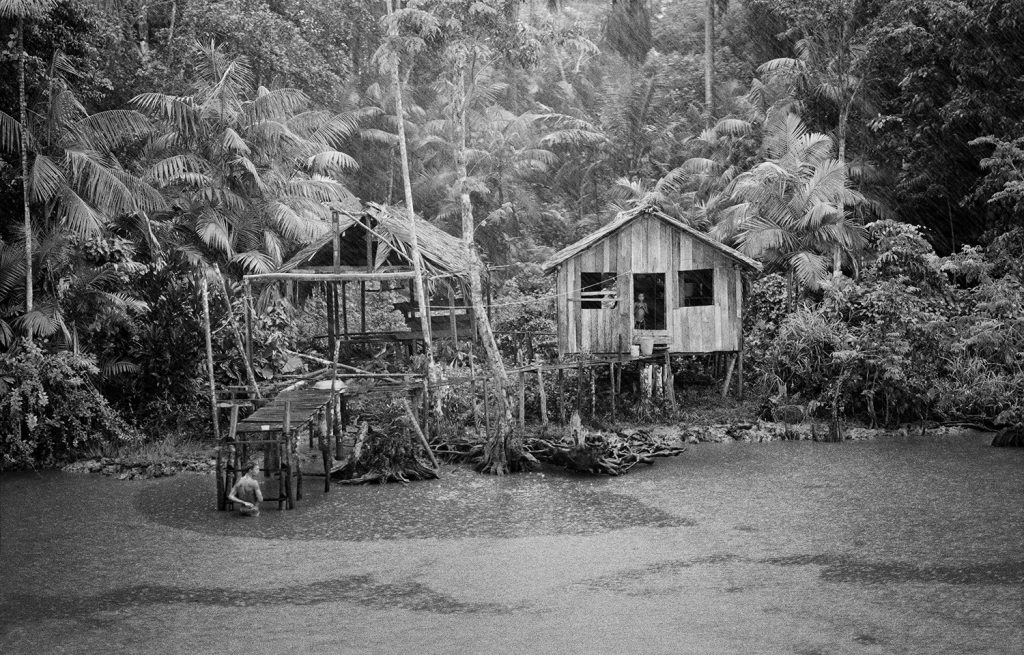
In the end, The Enchanted Ones is not just a photobook about a remote community in the Amazon. It’s an immersive, philosophical exploration of what it means to be human. The book is a testament to the fact that the best documentary photography comes from a place of genuine care for its subjects.
It’s a poignant and beautiful volume that I know I will return to again and again, each time finding a new layer of meaning in its pages, a new echo of life’s beautiful, chaotic, and enchanted journey.
Regards
Alex
